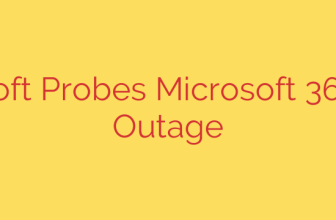
Streamline Your Workflow: The Ultimate Guide to Managing Git Hooks for Better Code Quality
In any collaborative software project, maintaining consistent code quality is a constant challenge. Different developers have different setups, leading to style inconsistencies, syntax errors, and failed CI/CD builds that could have been caught much earlier. The classic response, “it worked on my machine,” is a symptom of a deeper problem: a lack of standardized, automated checks at the most crucial point—the developer’s local environment.
Git hooks offer a powerful solution. They are scripts that run automatically at key points in the Git lifecycle, such as before a commit or a push. However, managing them effectively across a team has historically been difficult. This guide explores a modern, robust approach to centralizing Git hooks, ensuring every team member adheres to the same quality standards before a single line of code is shared.
The Core Problem with Standard Git Hooks
By default, Git hooks reside in your project’s .git/hooks directory. You’ll find several sample scripts in there, like pre-commit.sample and commit-msg.sample. To enable a hook, you simply rename the file by removing the .sample extension and ensure it’s executable.
The fundamental issue is that the .git directory is not tracked by version control. This means:
- Hooks are not shared: Your carefully crafted
pre-commitscript that runs a linter and a formatter stays on your machine. - Onboarding is manual: Every new developer has to manually set up their own hooks, a process that is often forgotten or done incorrectly.
- Inconsistency is inevitable: Without a shared source of truth, developers’ hooks will inevitably diverge, defeating the purpose of having a team-wide standard.
This limitation turns a powerful automation feature into a personal productivity tool rather than a cornerstone of team collaboration and quality assurance.
A Better Way: Version-Controlled Git Hooks
The solution is to move your Git hook scripts out of the untracked .git/hooks directory and into your project’s main repository. By storing them in a tracked directory (e.g., a folder named .hooks at the project root), you can version, share, and manage them just like any other piece of code.
To make this work, you need a simple manager or script that can link the hooks from your version-controlled directory to the local .git/hooks directory where Git expects to find them. This approach provides several immediate and powerful benefits:
- Centralized Management: All hooks are stored in one place within the repository. Updating a linting rule or adding a new check is as simple as committing a change to a file.
- Simplified Onboarding: A new developer can clone the repository and run a single command to install all the necessary hooks. This eliminates manual setup and ensures immediate compliance.
- Guaranteed Consistency: Every member of the team runs the exact same checks, because they are all using the same version-controlled scripts. This drastically reduces “it worked on my machine” issues and prevents buggy or poorly formatted code from ever entering the codebase.
Implementing a Centralized Hook Management System
Setting up a shared system for your Git hooks is straightforward. Here’s a step-by-step guide to get you started.
1. Create a Hooks Directory
In the root of your project repository, create a new directory to store your executable hook scripts. A common convention is to name it .hooks.
mkdir .hooks
2. Write Your Hook Scripts
Inside the .hooks directory, create files corresponding to the Git hooks you want to use. For example, to run a linter before every commit, create a file named pre-commit.
Here is a simple example of a pre-commit script that runs a code linter:
#!/bin/sh
echo "Running code linter..."
npm run lint
if [ $? -ne 0 ]; then
echo "Linter found issues. Aborting commit."
exit 1
fi
echo "Linter passed. Proceeding with commit."
exit 0
Remember to make your script executable: chmod +x .hooks/pre-commit
3. Install the Hooks
With a hook management tool, the installation process typically involves a single command. This command will find the hooks in your shared .hooks directory and create symbolic links to them inside the local .git/hooks directory. This is the magic step that connects your version-controlled scripts to Git’s execution mechanism. After running an installation command, every developer’s local Git configuration will be properly set up.
4. Commit and Share
Finally, add the .hooks directory to version control and commit it.
git add .hooks
git commit -m "feat: Add centralized pre-commit hook for linting"
git push
Now, anyone who pulls the latest changes can run the installation command to activate the hooks.
Beyond Commits: Integrating with Your CI/CD Pipeline
A major advantage of this approach is the ability to run the same quality checks in other environments, like your CI/CD pipeline. A good hook manager allows you to trigger all your checks with a single command outside of a Git event.
For instance, you could have a command that runs all the scripts in your .hooks directory. You can add this command as a step in your CI pipeline to validate pull requests. This ensures that the exact same quality gates are applied both locally for the developer and in your automated pipeline, creating a seamless and robust validation process.
Actionable Security and Best Practices
- Security First: Git hooks are executable scripts. Always review hook scripts from third-party sources or new team members before installing them. Malicious code in a hook could compromise your local machine or codebase.
- Automate Installation: For an even smoother workflow, consider using a
post-checkoutorpost-mergehook that automatically runs the installation command. This ensures that hooks are always kept up-to-date when switching branches or pulling new changes. - Keep Hooks Fast: Pre-commit and pre-push hooks block your workflow while they run. Ensure your hook scripts are optimized for speed. Offload long-running tasks like extensive integration tests to your CI/CD pipeline, and keep local hooks focused on quick checks like linting and formatting.
By moving your Git hooks into your version-controlled repository, you transform them from an individual convenience into a powerful, team-wide tool for enforcing quality, consistency, and best practices. This small change in your workflow can lead to a dramatic improvement in code quality, developer productivity, and overall project health.
Source: https://www.linuxlinks.com/hk-git-hook-manager-project-linting-tool/








